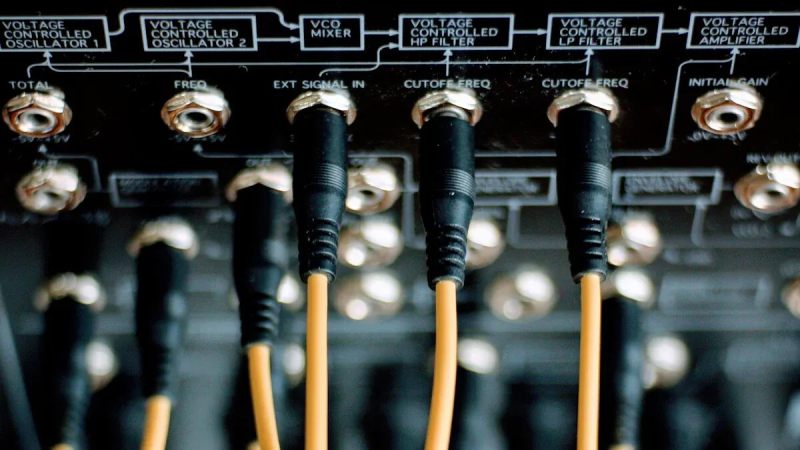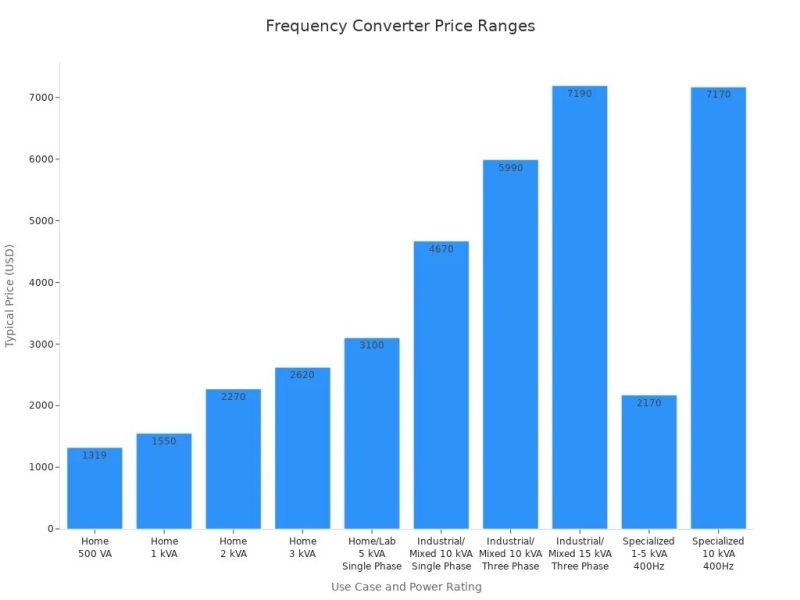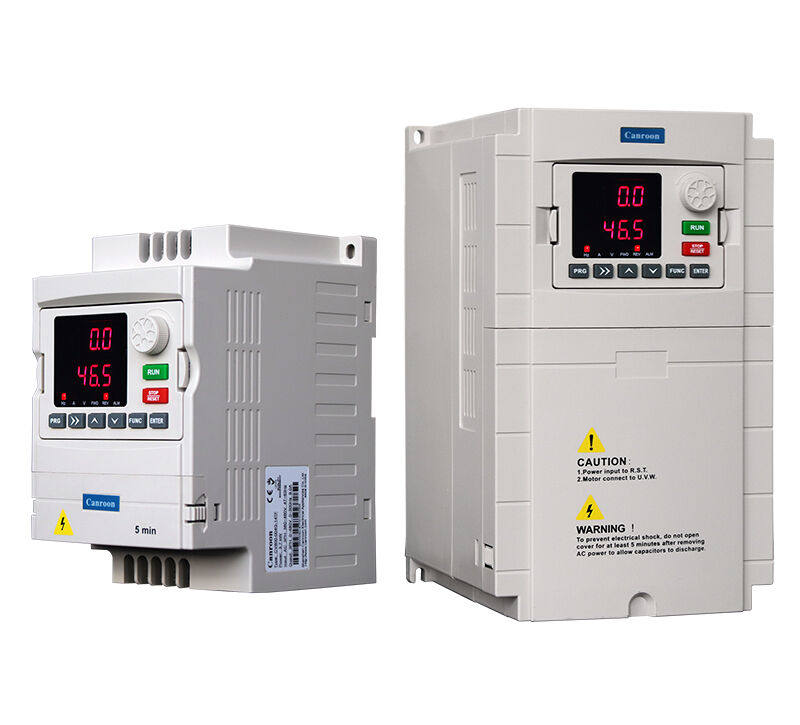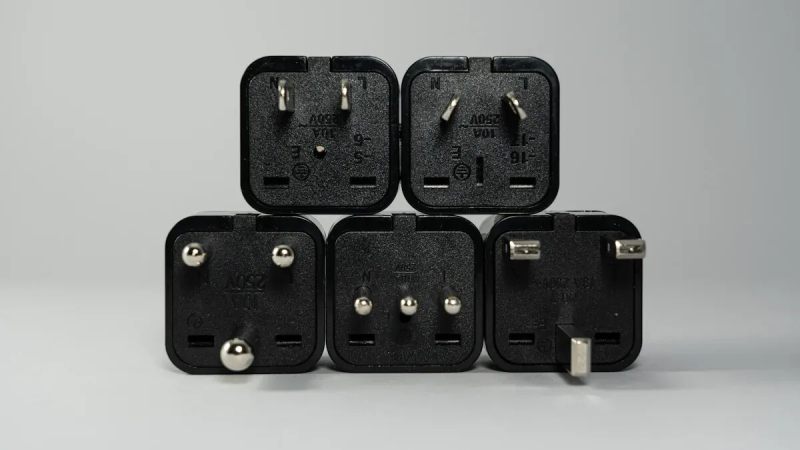

Are you trying to find the best frequency converter for home or work? Here are the top three choices for 2025. They are known for being affordable, efficient, and reliable:
Canroon CV800D Series: This inverter changes power smoothly. It works with storage and heavy-duty machines.
Siemens SINAMICS V20: This is a simple inverter. It helps with storage and basic motor control at home or work.
Hitachi SJ-P1: This inverter is easy to set up. It has features that help with storage, so it is good for many uses.
Market research for 2025 shows sales and storage data for frequency converter brands. This helps you pick from trusted leaders.
Key Takeaways
Pick a frequency converter that fits your power needs and system. This helps you get the best results and stops problems.
The Canroon CV800D, Siemens SINAMICS V20, and Hitachi SJ-P1 are great choices. Each one has different good points for home or work.
Single-phase converters are good for most homes. Three-phase converters are better for factories and big machines.
High conversion efficiency saves energy and money. It does this by running motors only as fast as needed and cutting waste.
Keep your frequency converter clean, cool, and with good airflow. This helps it work well and keeps your devices safe.
Comparison Overview
Key Specs Table
Do you want to know how these frequency converters compare? Here is a table that shows their main features. This can help you choose the best one for your energy storage or power needs:
Tip: Each of these models works well with energy storage. They are good for both homes and businesses.
Price and Use Case
You might want to know the cost and which one is best for you. Here is a table that shows the usual prices and where each converter works best:

You will see that prices get higher if you need more power. Prices also go up if you want advanced storage features. For homes, single-phase systems work for most appliances and storage. If you need more power for factories or green energy, three-phase systems are better. Higher power ratings are also needed.
New energy storage and power conversion systems have smart features. Some use IoT, modular designs, and special semiconductors. These new systems help you save energy and manage storage better. They also help with green energy. You get more reliable storage and energy management. This means less downtime and lower costs.
If you want the best storage for your home or business, pick converters with smart storage and green energy support. Flexible power options are also good. These systems give you more control and better storage. They are ready for the future.
Frequency Converter Reviews

Canroon CV800D Series
This inverter works for homes and factories. The Canroon CV800D Series is flexible for many uses. It supports single-phase and three-phase systems. You can use it for small home items or big machines at work. The modular design lets you add more power later if needed.
Main Benefits:
It is modular and small, so it saves space.
AI-enabled controls help you use energy better.
It is very efficient, up to 98%. You save money and waste less energy.
It works with off-grid and grid-connected inverter systems.
Technical Specs:
Power range is 0.75–500 kW.
It supports single-phase and three-phase power.
It gives pure sine wave output for good power quality.
Advanced cooling keeps it working in tough places.
Pros:
It works for homes and factories.
High efficiency means you pay less for energy.
It is easy to set up and expand.
Pure sine wave output keeps electronics safe.
Cons:
Bigger models cost more.
Some features need extra setup.
Ideal Use Scenarios:
You want to run your home off-grid with solar and batteries.
You need a strong inverter for factory machines.
You want to switch between grid and off-grid systems.
Price/Value:
Basic models start at about $1,550.
It is a good deal if you want flexibility and high efficiency.
Tip: The Canroon CV800D Series uses static frequency converter technology. This means there are no moving parts. You get better efficiency and less maintenance than rotary models.
Siemens SINAMICS V20
If you want something simple, the Siemens SINAMICS V20 is a good pick. This inverter is not expensive and is easy to set up. You can use it for home items, small business machines, or light factory systems.
Main Benefits:
It saves money because it is not costly.
It is strong and reliable for daily use.
It is quick to set up, even for beginners.
It is energy efficient, so you pay less for power.
It works for many different systems.
Technical Specs:
There are nine frame sizes to choose from.
Power range is 0.16 to 40 Hp.
It works with single-phase and three-phase power.
Pure sine wave output makes things run smoothly.
It works with off-grid and grid-connected inverter systems.
Pros:
It is easy to use and install.
It is good for homes and small businesses.
It is efficient for its size.
Pure sine wave output keeps devices safe.
Cons:
It is not for very big factory loads.
It has fewer features than top models.
Ideal Use Scenarios:
You want to run home items or small motors off-grid.
You need a backup inverter for your business.
You want a simple system for grid-connected setups.
Price/Value:
It starts at about $1,319.
It is a great deal for homes and small businesses.
Note: The SINAMICS V20 is a static frequency converter. It gives high efficiency and good control. It is great for steady loads and saving energy.
Hitachi SJ-P1
Do you want an inverter with smart features? The Hitachi SJ-P1 is a good choice. It works well for energy storage and factory automation. You get advanced control and strong performance.
Main Benefits:
Smart controls let you adjust your energy systems.
Pure sine wave output keeps machines running well.
It works with off-grid and grid-connected inverter setups.
It is very efficient, so less energy is wasted.
Pros:
It works for many types of systems.
It gives advanced control for speed, torque, and feedback.
Pure sine wave output is good for sensitive equipment.
It is good for energy storage and factory use.
Cons:
It costs more than basic inverters.
It may be harder to set up for new users.
Ideal Use Scenarios:
You want a smart inverter for energy storage.
You need exact control for factory machines.
You want to use both off-grid and grid-connected systems.
Price/Value:
It starts at about $2,270.
It is worth it if you need smart features and high efficiency.
Did you know? Static frequency converters like these inverters are more efficient and need less care than rotary models. Rotary converters are good for heavy, changing loads but need more work and cost more. For most homes and businesses, static inverters give better efficiency, are easier to install, and give reliable pure sine wave output.
Common Technical Challenges:
Overload protection can stop your inverter if you use too much power. Always check your load.
High heat can cause overheating. Make sure your inverter has good airflow.
Unstable voltage can hurt your devices. Adjust your inverter and use voltage regulators if needed.
Fault codes may show up. Check the manual or ask for help.
Communication problems can stop remote control. Check cables and settings.
Tip: Always pick an inverter that matches your power needs and energy systems. This helps you get the best efficiency and avoid trouble.
Inverter Types for Home Use

Single-Phase Inverter
A single-phase inverter is good for homes or small shops. It changes DC power from solar panels or batteries into AC power. You can use it for lights, fans, and fridges. Many people like single-phase inverters because they are cheap and simple to set up. You do not need special wires or a big system.
Single-phase inverters are great for off-grid houses. They work with solar panels or as backup during blackouts. Brands like Growatt and Goodwe make inverters that fit most budgets. Goodwe is known for low prices and steady work. Growatt gives you good value for your money. Deye costs more but has extra features and a longer warranty.
You can pick pure sine wave, modified sine wave, or square wave inverters. Pure sine wave inverters cost the most but give the best power. They are best for things like computers or medical devices. Modified sine wave inverters are cheaper and work for most home items. Square wave inverters are the cheapest but only work for simple things like lamps.
Tip: Always check your inverter’s power rating. Make sure it fits your needs so you do not overload your system.
Static Frequency Converter
A static frequency converter is another way to use off-grid inverters at home. This converter lets you run three-phase motors on single-phase power. You might use it for a small lathe, drill, or saw in your garage. Static converters are popular because they cost less than rotary converters and are easy to use.
Here are some reasons to pick a static frequency converter:
The converter is simple and needs little care.
It works well for light machines and tools.
You save money since you do not need to change your whole electric system.
Remember, a static frequency converter is best if you do not need full power all the time. If you use it for heavy loads, the motor can get too hot. For most home workshops, this is a smart and cheap choice.
If you travel or need power on the go, you can get universal inverters. Models like the Ceptics World Travel Adapter Kit 2 or the Ceptics 2000W Travel Voltage Converter help you use your devices in many countries. Some adapters only change the plug. Others change voltage for big items like hair dryers. These inverters are great for trips or off-grid fun.
Safety tip: Always use your inverter on a flat, dry place. Do not overload it, and watch for error messages or warnings on the screen.
Conversion Efficiency Factors
When you choose a frequency converter, you want it to work well. Good conversion efficiency means you get more power and waste less energy. This helps you save money and makes your storage last longer. It also helps with green energy and keeps your storage safe.
Power Output
Power output is very important when picking a frequency converter. You need to match the converter’s power to your storage and devices. If the converter is too weak, your storage may not work right. If it is too strong, you waste energy and money.
The right power output keeps your storage safe.
Small inverters are good for home storage or small heat pumps.
Big converters are best for factories or large storage.
Matching power output helps you avoid problems like over-frequency.
Frequency converters change power use to fit your storage. This helps conversion efficiency and keeps things running well.
Tip: Always check your storage and power needs before buying. This helps you get good efficiency and keeps your storage safe.
Energy Savings
You want your storage to save energy and lower your bills. High conversion efficiency gives you more power for less money. Variable frequency drives can save up to 70% energy. They let motors run only as fast as needed. This is great for homes and factories.
Here’s a quick look at how much energy you can save with high-efficiency converters:
You can see that high conversion efficiency saves a lot of energy. This works for homes, factories, and green energy storage. Using efficient converters helps your storage last longer and support more green energy.
Note: Keep your frequency converters clean and cool. Check them often to keep conversion efficiency high and protect your storage.
Choosing the Right Frequency Converter
Assessing Needs
You want to pick the best inverter for your home or business. Start by thinking about what you need to power. Make a list of all your devices, like lights or machines. Check how much power each one uses. Add about 10–20% more to your total. This extra helps with short power spikes. It keeps your inverter and storage safe.
Think about where you will use your inverter. Is it for off-grid living or backup power? Some inverters work better in hot or dusty places. If you have a garage or workshop, you may need a static inverter for three-phase motors. For home storage, single-phase inverters are usually best.
Here are the main things to check before you buy:
Write down all devices and their power needs.
Decide if you want off-grid or grid-connected power.
Choose between single-phase or three-phase power.
Look at the space and where you will put the inverter.
Think about energy efficiency and storage compatibility.
Ask about brand support and warranty.
Tip: Always match your inverter’s power rating to your storage and devices. This helps you avoid overloads and keeps your energy flowing.
Budget and Features
Your budget is important when picking an inverter. Home users often choose simple inverters with basic features. These cost less and work well for lights and fans. If you want more control or need to connect to the grid, look for smart features. These can include remote monitoring or automatic settings.
Industrial users need more advanced inverters. You might need vector control, fast response, and high efficiency. These inverters cost more but protect your storage and keep energy steady. Look for features like alarms, cooling, and real-time monitoring. These help your storage last longer and save energy.
Here’s a quick table to help you compare:
Note: Always check the warranty and after-sales support. Good support makes your inverter and storage solutions last longer.
You can find the right inverter by matching your power, storage, and energy needs to your budget. Look for options that balance efficiency, features, and price. This way, you get reliable energy for your home or business, no matter what system you use.
You need to pick the right inverter for your storage and energy. Each model is good at something different:
Choose Canroon if you want strong storage and good power. It works well for both off-grid and grid-connected systems. Always make sure your converter fits your storage, power, and energy needs. This helps you get the best results.
FAQ
What size frequency converter do I need for my home?
You need to check the total wattage of your appliances. Add up the power each device uses. Pick a converter with at least 20% more power than your total. This helps you avoid overloads.
Can I use a frequency converter with solar panels?
Yes, you can! Many converters work with solar systems. Just make sure your converter matches your solar inverter’s output. Look for models that support both grid and off-grid setups.
How do I know if I need a single-phase or three-phase converter?
If you use basic home appliances, a single-phase converter works best. For heavy machines or factory tools, choose a three-phase converter. Always check your device’s power label.
Do frequency converters save energy?
Yes, they do. Frequency converters help motors run only as fast as needed. This cuts down on wasted power. You can save money on your electric bill.
What maintenance does a frequency converter need?
You should keep your converter clean and cool. Check for dust and make sure air can flow around it. Look at the manual for any warning lights or error codes. If you see a problem, call support.
Previous:
Next:
Sign up for updates
